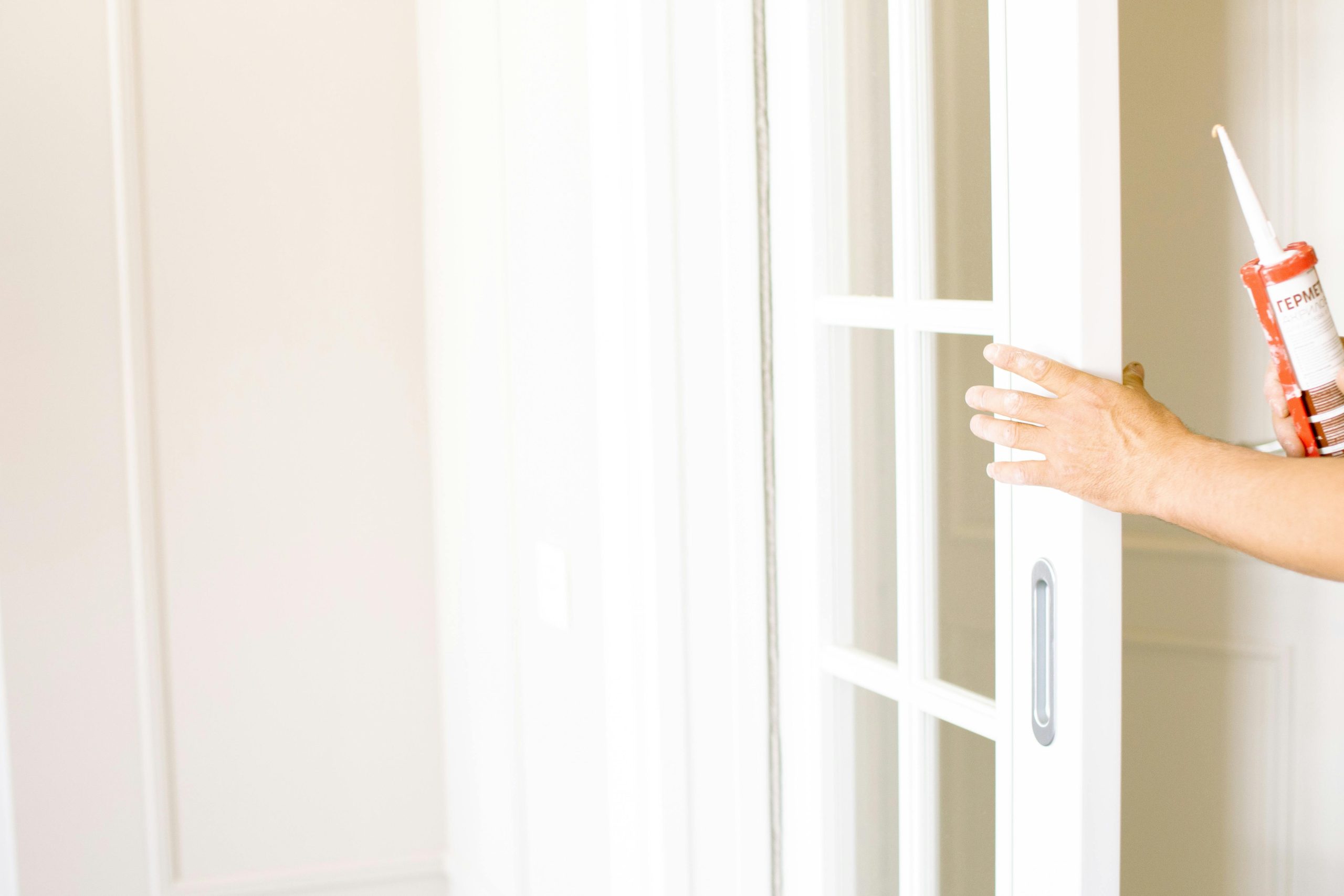DIY Guide: How to Fix a Sagging Door Easily
A sagging door is a common household issue that affects both functionality and appearance. Doors that stick, scrape the floor, or fail to latch properly are often caused by worn hinges, loose screws, or changes in humidity and house settling. Fixing a sagging door doesn’t always require a professional; with the right tools and guidance, most homeowners can correct the problem themselves. This guide will cover causes, tools, step-by-step repair methods, and tips to prevent future sagging.
Common Causes of a Sagging Door

Before attempting to fix a sagging door, it’s important to understand the underlying causes. Identifying the root problem allows you to choose the most effective repair method and prevent the issue from recurring. Some of the most common causes include:
- Loose or Worn Hinges: Over time, screws can loosen or hinges can wear down, causing the door to shift downward. Even small gaps between the hinge and frame can result in noticeable sagging. Regularly check screws for tightness, and replace hinges if they appear bent, rusted, or damaged.
- House Settling: Homes naturally shift and settle over time, especially in new constructions or homes built on clay or uneven soil. As walls and door frames settle, doors may no longer align perfectly, leading to uneven gaps and difficulty latching.
- Humidity and Warping: Wood doors are sensitive to moisture. High humidity can cause the wood to expand, while dry conditions can make it shrink. These changes can create uneven pressure on hinges, causing the door to sag or stick in the frame. Warping can also twist the door slightly, affecting both aesthetics and function.
- Heavy Doors: Larger doors, such as solid wood, double doors, or exterior doors, exert more stress on hinges and frames. Even if installed correctly, heavy doors can gradually sag over time. Using longer screws or additional hinges may help support the weight.
- Improper Installation: Doors that were not installed plumb (perfectly vertical) from the start are more prone to sagging. Misaligned hinges, uneven frames, or poorly fitted doors can accelerate wear and create gaps between the door and frame.
- Worn Door Frames: In some cases, the frame itself may have deteriorated due to age, moisture, or termite damage. A compromised frame will not hold hinges securely, leading to sagging or misalignment.
- Hardware Issues: Beyond hinges, doorknobs, latches, and strike plates that are loose or misaligned can create pressure on the door, contributing to sagging over time. Ensuring all hardware is properly installed and tightened can reduce stress on the door.
- Repeated Use and Force: Frequent slamming, heavy traffic, or rough handling can gradually wear down hinges and the door itself. Over time, this repeated stress may cause a noticeable sag.
Tip: Inspect your door and frame carefully to pinpoint the exact cause. Sometimes a combination of factors—such as a heavy door with slightly loose hinges—is responsible. Knowing the specific cause allows you to select the most effective repair method, whether it’s tightening screws, replacing hinges, shimming the frame, or reinforcing the door.
By understanding why doors sag, homeowners can address the problem efficiently and prevent further damage, improving both the appearance and functionality of the door.
Tools and Materials You’ll Need
Before starting, gather the following tools and materials:
- Screwdriver or drill (preferably with a Phillips head)
- Replacement screws (preferably 2–3 inches long for stronger grip)
- Shims or cardboard
- Wood filler or toothpicks (for stripped screw holes)
- Sandpaper
- Level
- Hammer
- Lubricant (like WD-40)
Having these on hand ensures the repair process is smooth and efficient.
Step 1: Inspect Hinges and Screws
Begin by examining the door and hinges carefully.
Inspection Steps:
- Open and close the door slowly to identify sticking points or areas scraping the frame or floor.
- Check each hinge for loose screws or signs of wear.
- Tighten any loose screws with a screwdriver or drill.
Tip: If screws are stripped or can’t grip tightly, you may need to fill the hole with wood filler, a wooden toothpick, or replace with longer screws for better support.
Step 2: Adjust the Hinges
Hinge adjustment is often enough to correct minor sagging.
How to Adjust:
- Tighten all hinge screws securely. Start with the top hinge, as it supports most of the door’s weight.
- If the door still sags, slightly loosen the screws on the middle hinge to allow repositioning.
- Use shims behind the hinges if the door needs slight lifting. Small cardboard pieces work well.
Tip: Test the door after each adjustment to ensure proper alignment and smooth operation.
Step 3: Repair Stripped Screw Holes
If screws won’t stay tight, the hole may be stripped.
Fixing Stripped Holes:
- Remove the screw from the hinge.
- Insert wooden toothpicks coated in wood glue into the hole to fill it.
- Break off excess toothpick and let glue dry.
- Reinsert the screw and tighten.
Alternative: You can also use wooden dowels or slightly larger screws for a permanent fix.
Step 4: Sanding or Planing the Door
Sometimes, sagging is worsened by the door rubbing against the frame or floor. Minor adjustments to the door itself can solve this issue.
Steps:
- Identify areas where the door sticks or scrapes.
- Remove the door from its hinges if needed.
- Use sandpaper or a hand planer to carefully shave down the contact area.
- Rehang the door and test for smooth operation.
Tip: Sand gradually and check frequently. Removing too much material can create gaps.
Step 5: Lubricate Hinges

Even properly aligned doors can squeak or stick if hinges are dry.
Lubrication Steps:
- Apply a small amount of WD-40 or household oil to each hinge pin.
- Open and close the door several times to distribute the lubricant.
- Wipe away excess to prevent staining the floor or door surface.
Tip: Regular lubrication prevents sagging caused by friction and prolongs hinge life.
Step 6: Reinforce Heavy Doors
If the door is particularly heavy, consider extra support to prevent future sagging.
Methods:
- Install longer screws in the top hinge to anchor it into the door frame stud.
- Add a third hinge in the middle for extra support.
- Consider installing a continuous hinge (also called piano hinge) for very heavy doors.
Step 7: Prevent Future Sagging
Once your door is fixed, follow these tips to maintain alignment:
- Regularly inspect hinges and tighten screws as needed.
- Lubricate hinges every few months to reduce friction.
- Avoid slamming doors, which stresses hinges.
- Control indoor humidity to prevent wood expansion and contraction.
- Use door stops to avoid hitting walls or furniture, which can misalign hinges over time.
When to Call a Professional
Most sagging doors can be fixed at home, but call a professional if:
- The frame itself is warped or damaged.
- You have a large exterior or fire-rated door that requires precise adjustment.
- Multiple doors in your home are sagging, indicating structural issues.
Professionals can realign doors, replace hinges with heavy-duty hardware, or correct underlying frame problems that are difficult for DIYers.
Safety Considerations
Fixing a sagging door involves tools, hardware, and sometimes heavy lifting, so taking safety precautions is essential. Ignoring basic safety measures can lead to injury or damage to your door and home. Consider the following guidelines:
- Use a Stable Step Stool or Ladder: When working on top hinges or adjusting the door frame, ensure you have a sturdy step stool or ladder. Avoid standing on chairs or unstable surfaces, which can slip and cause falls.
- Get Help with Heavy Doors: Solid wood or exterior doors can be quite heavy. Always ask a friend or family member to help you remove or hold the door while making adjustments. Lifting alone can result in back strain or dropping the door, potentially damaging floors or walls.
- Avoid Over-Tightening Screws: While it’s important to secure screws properly, over-tightening can strip the wood, crack the door, or warp the frame. Turn screws snugly and stop once you feel resistance. Use longer screws if extra grip is needed instead of forcing them.
- Keep Tools and Hardware Organized: Spread-out tools, loose screws, and drill bits create tripping hazards. Use a toolbox or a designated workspace to keep everything within reach and off the floor.
- Wear Protective Gear: Consider wearing gloves to protect your hands from sharp edges, splinters, or metal hinge parts. Safety glasses can protect your eyes from dust or debris when sanding or drilling.
- Work in a Well-Lit Area: Adequate lighting reduces the risk of missing steps, misplacing screws, or accidentally damaging surfaces. Use portable work lights if natural light is limited.
- Be Mindful of Electrical Hazards: If your door is near outlets, light switches, or smart home sensors, avoid contact with electrical components when drilling or inserting screws. Turn off nearby circuits if needed.
- Maintain Good Posture: Lift with your legs, not your back, and bend at the knees when handling heavy doors or tools. This reduces the risk of strain or injury.
By following these safety practices, you can fix a sagging door efficiently while minimizing the risk of accidents or property damage. A careful, methodical approach ensures both your safety and the longevity of the door repair.
Conclusion
Sagging doors are a common problem, but with the right approach, they can be fixed efficiently and inexpensively. Start by inspecting hinges and screws, adjust alignment, repair stripped holes, and, if necessary, sand or plane the door. Proper maintenance and lubrication prevent future sagging and ensure smooth, safe operation. By following these step-by-step methods, most homeowners can restore their doors to perfect alignment without hiring a contractor.
Remember, addressing a sagging door early prevents further damage to hinges, frames, and flooring, saving time and money in the long run.


